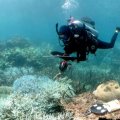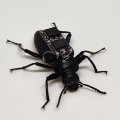Conservation scientists from The University of Queensland are showing saving biodiversity in Australia can be cheap by applying a little economics.
Lead researcher Josie Carwardine, from UQ’s Centre for Applied Environmental Decision Analysis (AEDA) said the research showed the costs of conserving biodiversity could be cut by half when the types of biodiversity, the actions to conserve them, and the costs of those actions are all taken into account.
Ms Carwardine said the work showed which parts of Australia are better suited to meet conservation outcomes in the cheapest possible way.
“This is great news as it means we can save more biodiversity for our money,” Ms Carwardine said.
“Our approach is not one of ‘giving up’ on expensive species or ecosystems, but where there is a choice, the cheaper areas are identified.
“Some areas are essential for representing biodiversity regardless of their cost, and if threatened, these represent the most immediate priorities.”
Ms Carwardine carried out the research as part of her PhD, in collaboration with the Australian government’s Department of the Environment, Water, Heritage and the Arts, and under the supervision of Professor Hugh Possingham, director of AEDA, and Dr Kerrie Wilson, a Senior Lecturer with UQ’s School of Integrative Biology.
The team identified cost-effective places for conserving biodiversity in Australia using two different conservation actions: the acquisition of land to create new national parks or reserves; and the initiation of stewardship arrangements on private land, where landowners are paid to conserve biodiversity.
Dr Wilson said as the study looked across the entire country, the costs of these actions could vary from tens-to-millions of dollars per hectare.
“Previous approaches, such as biodiversity hotspots, find places with high densities of important species, but don’t consider these vast differences in the costs of different conservation actions over large areas, which leads to inefficiency,” Dr Wilson said.
She said their work was particularly unique because it investigated opportunities for conservation on private land as well as the option of making new reserves.
“Lots of biodiversity exists in areas that are unlikely to be available for national parks in the near future,” Dr Wilson said.
“Many landowners welcome the opportunity to gain income to conserve biodiversity on their land.”
Professor Possingham said many conservation decisions were made without taking into account fundamental parts of objective setting, like actions and the costs of actions.
“Our research aims to inspire more economically grounded decision making so that we can use our conservation dollars more wisely,” Professor Possingham said.
The research was recently published in the journal PLoS ONE http://www.plosone.org/doi/pone.0002586
Media: Josie Carwardine (+44 752851 0768 – in England), Prof Hugh Possingham (0434 079 061), Dr Kerrie Wilson (0432844079) or Andrew Dunne at UQ Communications (07 3365 2802 or 0433 364 181).
.jpg)


